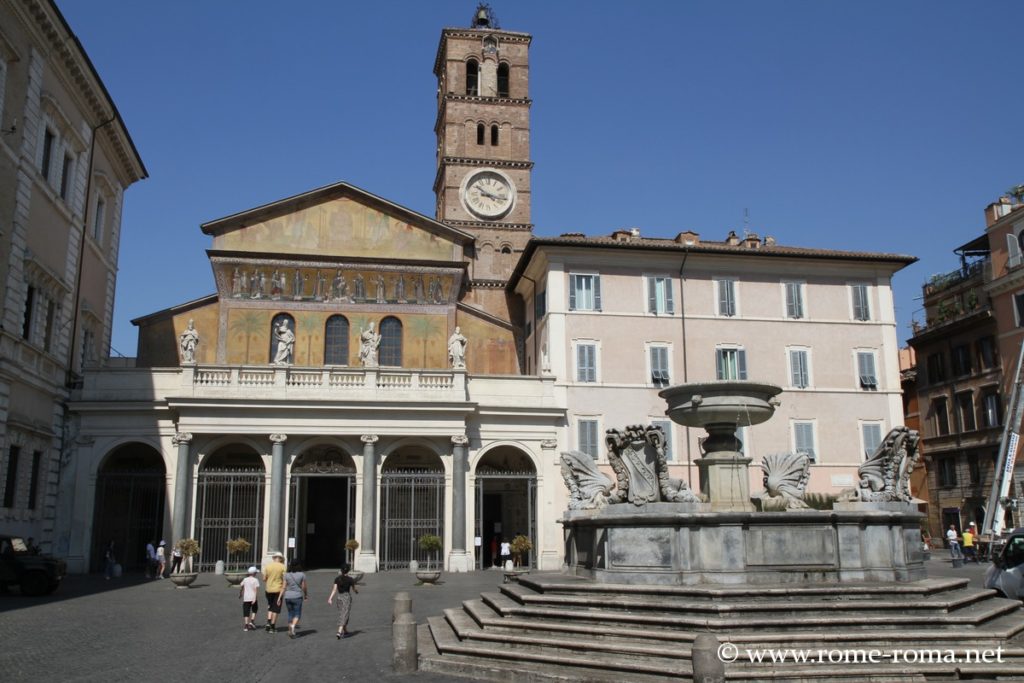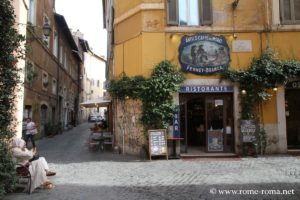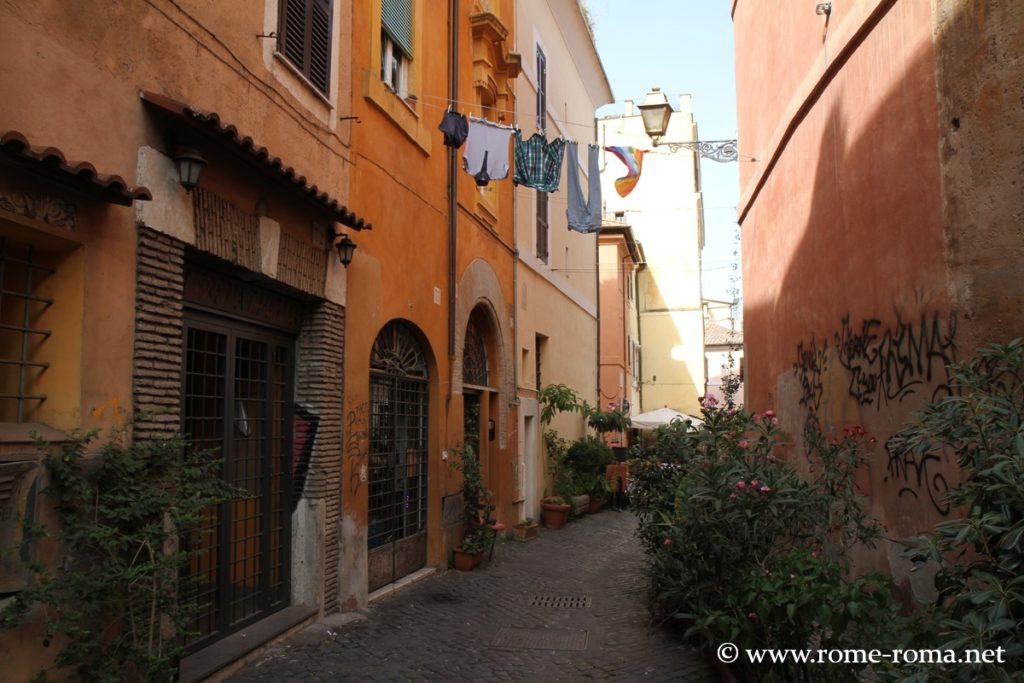Introduction to Trastevere
Trastevere has become a popular neighborhood, visited by tourists during the day and frequented by young people in the evening. Its name, derived from the Latin “Trans Tiberim,” means across the Tiber, referring to its location on the river’s western bank.
Its winding, colorful streets are enjoyable to walk through and lend themselves well to strolling. Despite the growth of tourism, the neighborhood has retained part of its character and continues to attract artists, especially on the other side of Viale di Trastevere, where the atmosphere is calmer. There are still artisans, small shops, and of course trattorias offering traditional cuisine.
Locals have always claimed a distinct identity, which still persists to some extent. In the 18th century, Charles Pinot Duclos wrote: “There is a class of the people of Rome who consider themselves far superior to the others: they are the Transteverini. They are convinced that they descend from the ancient Romans.”
An Ancient Roman Neighborhood
The area was probably inhabited by fishermen and sailors working along the river since the occupation by the neighboring Etruscan city of Veii, contemporary with early Rome.
Under the Roman Republic, significant Jewish and Syrian communities from the East also settled here. The neighborhood was officially incorporated into Rome by Augustus in 7 BCE, who made it the 14th region, extending then to the area of the modern Vatican, although it was only partially protected by walls from around 275 CE with the construction of the Aurelian Walls.
It remained a poor neighborhood, on the outskirts of the ancient center. However, some remarkable villas were built here under the Empire, and early Christians founded some of Rome’s first churches here at the beginning of the 4th century.
The Neighborhood’s Two Faces
In the lower part of the neighborhood, the most notable and tourist-heavy square is that of the magnificent church Santa Maria in Trastevere.
This area, stretching from the banks of the Tiber, has for more than a century been divided by Viale Trastevere, a major traffic artery with its tram line. Over time, this separation has led to divergent development. The western part is livelier and more tourist-oriented, centered on Piazza di Santa Maria in Trastevere, with higher up Villa Farnesina and the Botanical Garden.
Meanwhile, to the east, around the Santa Cecilia Basilica, the equally charming streets are much quieter, even deserted at night.
The Janiculum Hill
To the west of the neighborhood, streets and stairways climb Janiculum Hill (Gianicolo in Italian), whose name means the hill of the god Janus.
On its slopes is the large Fontana dell’Acqua Paola, near the Spanish Academy with the church of San Pietro in Montorio and the famous Bramante’s Tempietto.
At the top is the belvedere around Piazza Garibaldi, offering a spectacular view of Rome on one side and St. Peter’s Dome on the other. To the north, one descends toward Borgo and the Vatican, while to the southwest lies the Monteverde neighborhood and the Villa Pamphilj Park.
Sites and Places in Trastevere
Areas of Trastevere
Squares in Trastevere
Main Sites and Churches
- Basilica of Our Lady in Trastevere
 Santa Maria in Trastevere was built in the 12th century. Discovery of ...
Santa Maria in Trastevere was built in the 12th century. Discovery of ...
Museums
More Neighborhood Sites
Practical / Hotels in Trastevere
- Good hotels in the Trastevere neighborhood, sorted BY PRICE, within one kilometer of Piazza Santa Maria in Trastevere (for 2 adults)
- Good and excellent hotels in the Trastevere neighborhood, sorted BY DISTANCE from Piazza Santa Maria in Trastevere (for 2 adults)
Map of Sites in Trastevere
If you see this after your page is loaded completely, leafletJS files are missing.



![Santa-maria-trastevere_3757[1]](https://www.rome-roma.net/wp-content/uploads/2020/04/Sainte-marie-trastevere_37571.jpg)


